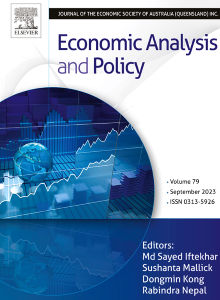Does the timing of subsidized loans matter for clean energy technological innovation? Evidence from China
IF 7.9
2区 经济学
Q1 ECONOMICS
引用次数: 0
Abstract
Clean energy technological innovation is essential to reduce energy security risks, and policy support is necessary to remedy its double positive externalities. Subsidized loans are one of the important instruments by integrating policy and the market factors. However, issuing subsidized loans at different time points may have different impacts on corporate technological innovation. This is an issue that has not yet been clarified. The study involves the manual collection of data on subsidized loans of clean energy enterprises. Based on the time sequence of subsidized loans and enterprises’ research and development (R&D) activities, subsidized loans are manually classified into a “prior” group (low-interest loans where subsidies are given beforehand) and a “post” group (interest subsidies where subsidies are given afterwards). The impacts and associated mechanisms of subsidized loans at different time points on technological innovation of clean energy enterprises (TICE) are then analyzed. The results indicate that compared with interest subsidies, low-interest loans have a stronger positive effect on future TICE. Financing constraints play a mediating role in the process. Interest subsidies, as a type of post-subsidized loan, do not, by definition, stimulate TICE that has occurred in the past; instead, they may benefit future R&D activities. In addition, financial development may play a positive moderating role in the process of interest subsidies affecting future TICE. Moreover, there is heterogeneity in the impacts of subsidized loans on TICE. The government should attach importance to the prior subsidized loans to promote clean energy technological innovation, thus reducing energy security risks.
求助全文
约1分钟内获得全文
求助全文
来源期刊

Economic Analysis and Policy
ECONOMICS-
CiteScore
9.80
自引率
9.20%
发文量
231
审稿时长
93 days
期刊介绍:
Economic Analysis and Policy (established 1970) publishes articles from all branches of economics with a particular focus on research, theoretical and applied, which has strong policy relevance. The journal also publishes survey articles and empirical replications on key policy issues. Authors are expected to highlight the main insights in a non-technical introduction and in the conclusion.
 求助内容:
求助内容: 应助结果提醒方式:
应助结果提醒方式:


